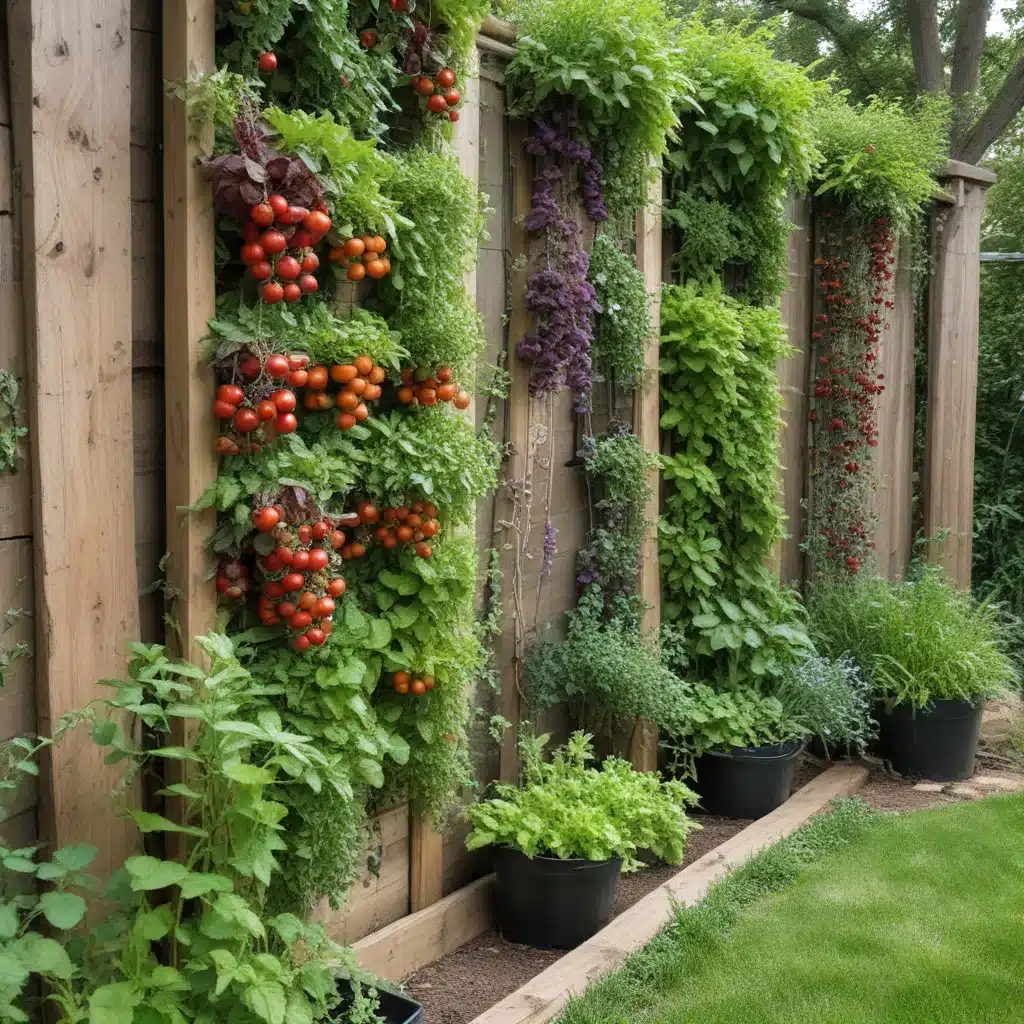
Backyard Bounty: Expanding Your Edible Landscape with Vertical Gardening
Cultivating a bountiful and space-efficient garden is the dream of many home growers, and vertical gardening offers an innovative solution to maximize your edible landscape, even in the most compact of backyards. At Crooked Pines Farm, we believe in empowering our community to grow more of their own food, and vertical gardening is a fantastic technique to help you do just that.
Vertical Gardening Fundamentals
Vertical gardening is the art of growing plants upwards, rather than sprawling across the ground. By utilizing the 3-dimensional space in your garden, you can pack in more plants, increase your yields, and create a visually stunning edible oasis. The key principles of vertical gardening include:
- Efficient Space Utilization: Rather than dedicating precious ground space to sprawling crops, vertical gardening allows you to grow up, conserving valuable horizontal area.
- Improved Air Circulation: Lifting plants off the ground improves airflow, reducing disease and pest issues.
- Enhanced Light Exposure: Vertical structures position plants to capture more direct sunlight, boosting photosynthesis and productivity.
- Easier Maintenance: Elevated plants are more accessible for tasks like pruning, harvesting, and monitoring.
When designing your vertical garden, consider factors like available space, sunlight exposure, and the specific needs of the plants you wish to grow. Crafting a cohesive, productive layout is crucial for maximizing your backyard bounty.
Vertical Gardening Structures
The foundation of any vertical garden is the framework supporting your plants. Popular options include:
Trellises and Supports: A wide variety of trellis systems, from simple A-frames to intricate lattices, provide sturdy structures for climbing and vining crops like tomatoes, cucumbers, and pole beans.
Hanging Planters and Wall-mounted Systems: Suspend baskets, pots, and wall-mounted planters to grow compact, trailing plants like strawberries, herbs, and leafy greens.
Vertical Gardening Containers: Self-contained vertical garden units, often multi-tiered, allow you to grow a diverse array of edibles in a small footprint.
When selecting your vertical structures, prioritize sturdy, weather-resistant materials that can safely bear the weight of mature plants and their produce. Integrating your vertical elements harmoniously with the overall garden design is also key for an aesthetically pleasing result.
Selecting Suitable Plants
The success of your vertical garden hinges on choosing the right plants. Look for:
Climbing and Vining Edibles: Crops like pole beans, cucumbers, tomatoes, and peas naturally grow upwards, making them ideal candidates for trellises and supports.
Compact and Trailing Edibles: Herbs, strawberries, and leafy greens thrive in hanging baskets and wall-mounted planters, cascading gracefully down the vertical structure.
Maximizing Vertical Space: Pair taller, upright plants with lower-growing, shade-tolerant species to create layered vertical arrangements that optimize every inch of your garden.
Researching the mature size, growth habits, and sunlight requirements of potential crops is essential for crafting a successful vertical garden plan.
Soil and Nutrient Management
Ensuring your vertical garden’s soil is nutrient-rich and well-draining is crucial for plant health and productivity. Amend your planting mediums with compost and aged manure to provide a balanced blend of organic matter and essential nutrients.
To tackle the unique watering needs of vertical gardens, consider installing drip irrigation systems or implementing water-conserving techniques like mulching and water-absorbing polymers. Regular monitoring and adjustments will help you strike the right balance between moisture and aeration for your elevated plants.
Maintenance and Care
Vertical gardening requires some specialized care and maintenance techniques. Regularly pruning and training your climbing and vining crops to follow the support structures is essential for maximizing yields and maintaining an orderly appearance.
Vigilantly monitor your vertical garden for pests and diseases, as the elevated plants may be more susceptible to certain issues. Employ companion planting strategies and organic control methods to keep your edibles thriving.
Harvesting your vertical garden can be a delightful experience, with many crops within easy reach. Develop an efficient system for regularly gathering your bountiful yields, ensuring you can enjoy the full potential of your backyard oasis.
Integrating Vertical Gardening
Vertical gardening is most effective when seamlessly incorporated into your overall edible landscape design. Combine your vertical structures with traditional raised beds, in-ground plantings, and container gardens to create a visually striking and productive space.
Consider the aesthetic appeal of your vertical elements, using them as focal points or blending them harmoniously with the surrounding garden. Strategically placed trellises, hanging baskets, and vertical garden units can transform an ordinary backyard into an inviting edible oasis.
Sustainability and Environmental Impact
Vertical gardening offers numerous sustainability benefits, including:
Water Conservation: The compact, elevated nature of vertical gardens reduces evaporation and runoff, allowing you to use water more efficiently.
Reduced Carbon Footprint: By growing more food in less space, vertical gardening minimizes the environmental impact of your edible landscape.
Biodiversity Enhancement: Vertical structures provide valuable habitat and resources for beneficial insects, birds, and other wildlife, promoting a thriving garden ecosystem.
Future Trends in Vertical Gardening
As the demand for urban and suburban food production continues to grow, vertical gardening is poised to play an increasingly prominent role. Advancements in hydroponic and aeroponic technologies, coupled with innovative container designs, are expanding the possibilities of what can be grown in vertical spaces.
Moreover, educational and community engagement initiatives are bringing vertical gardening into the mainstream, empowering people of all ages to explore the joys and benefits of growing their own food, even in the most compact of settings.
By embracing the power of vertical gardening, you can transform your backyard into a bountiful and sustainable edible landscape, no matter the size of your available space. So, let’s get growing – your vertical garden awaits!


